Networking
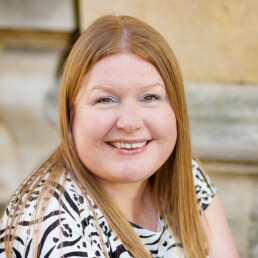
Hannah Wilson
I get asked a lot why I am so good at networking and it has become a theme I have thus run leadership training on over the years.
My answer to the question ranges from:
- I am confident.
- I am an extrovert.
- I was brought up in a family where we were taken to a lot of social events.
- I spent most of my teens working in hospitality.
- I am outward-facing as a leader.
These are some of the reasons it comes to me quite naturally and some of the skills that I have developed over the years despite it being a barrier for a lot of women (according to research and anecdotally from my network).
In Giant’s Five Voices I am a Pioneer-Connector which means I like to break through boundaries and build relationships. i.e. I like to bring people with me on the journey:
- The Pioneer is a future-oriented voice, with the ability to coordinate resources and people to turn big ideas into accomplishments.
- The Connector thrives on spinning plates and making connections, as they seem to effortlessly remember details about what other people are working on and what they might need.
But on reflection I want to share with you some of the intentional things I have done over the years to build and grow my network as well as I don’t think people always appreciate the time, energy and resources that has been spent establishing and nurturing relationships.
I am very aware that I am currently picking the fruit from the seeds I planted several years ago and I think sometimes I make networking look easier than it is!
Joining social media – Twitter was my first foray into edu-networking as I was looking to find people outside of my organisation who were vision and values-aligned. I struggled with it at first and left, but then rejoined a few months later.
Attending teachmeets – by getting to grips with Twitter I began to connect with people virtually. I was living in London at this time and the grassroots scene was burgeoning so I started going to, then speaking at and then organising teachmeets.
Finding my tribe – co-founding #WomenEd was about finding leaders like me as I had just been appointed as a Vice Principal and I was the only female leader on the SLT. I needed to create a circle of support around me – existing women leaders and those who were very established in their career.
Following up from events – as we began to host and speak at more events, I made it a habit to follow up with new contacts on social media and email to stay connected. Sometimes it was as simple as a “it was great to meet you at the weekend”.
Being intentional at events – this led to me becoming more intentional before I went to events, especially conferences where there are so many sessions and speakers. I purposefully went to sessions to meet virtual contacts in real life. I also made sure I was following everyone on social media before I got there.
Expanding my digital footprint – I think it is LinkedIn which has been and continues to be the best platform to network on. As I relocated to Oxfordshire to take on my headship, I was networking 6 months before I arrived with peers in the county and with people I needed to connect with.
Becoming an introducer – I have a couple of nicknames that friends have given me including Del-Boy (I am good at negotiating a deal and leveraging the assets I have for what we need) and Cilla (I remember names, faces and find ways to connect people who are passionate about the same things).
Although my network can feel like a bit of a beast at times, and it does need a bit of pruning from time to time, I can say that the investment has definitely opened doors for me and created opportunities for me that I would never have dreamt of.
If it all sounds and feels a bit daunting, remember to take things one step at a time and be clear on what you are doing and why you are doing it. Other people will be finding it just as awkward as you are so don’t assume that the swans are not paddling madly under the water line to make it look effortless.
#IamRemarkable

Hannah Wilson
Remarkable: adjective. worthy of attention; striking.
“I am remarkable because…”
Why is it so hard to finish this sentence? Can you reflect on what or who has shaped your thinking to hold yourself back from owning your own accomplishments? The voice you hear, who does it belong to? I bet you can relate it to something that a parent or a family member said to you as a child, or a colleague said to you in your career.
Does your inner critic scream: “Who does she think she is?”
Does your work nemesis mutter under their breath: “Get back in your box!”
Or if it is not hard to finish? Can you reflect on why that is? Have you considered exploring the privilege and the power you have in not having this self-limiting factor holding you back from sharing your successes with others?
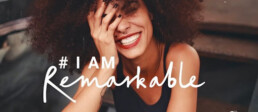
Research shows that those who self-promote, get promoted. Go figure. Those individuals who articulate, celebrate and amplify their accomplishments are seen, heard and recognised in their work places. The spotlight is put on them, by them. Whereas, those who shy away from verbalising their accomplishments out loud, stay in the shadows.
Research shows that some demographic groups are more inclined to the act of self-promotion but this is not a skill we are, or are not, born with. Self-promotion is not a quality, it is a skill. A skill we need to develop, practise and perfect.
People from under-represented groups are less likely to self-promote. Why is this?
I believe this is because they/ we have been conditioned to see self-promotion as a negative. Self-promotion can lead to judgement, criticism and if unrecognised or ignored can further fuel our inner critic. We thus hold ourselves back, paralysed in fear.
We all experience the Imposter Syndrome, we are afraid of people realising we are frauds and that our input is not valid, that our ideas do not deserve to be heard as we have not earned the right to be there. This is how we are conditioned to think. We have been brainwashed to be humble and to be modest – that owning, sharing and celebrating our accomplishments is unbecoming.
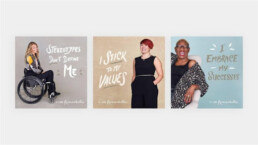
We know there are societal, structural and systemic barriers acting as obstacles in the pathways of individuals. Women and BAME individuals need to work even harder to smash through the glass and the concrete ceilings above them. Do we really need to stand in our own way too? Should we really stand in the way of others too?
Because the truth of the matter is that we are part of the problem. We are judgemental and hyper-critical of our peers who self-promote. Their progress brings out the worst in us! Self-promotion in others can incite envy, resentment, jealousy and bitchiness in us.
Research shows that there are biases around self-promotion. Self-promotion can become conflated with boasting or bragging. Self-promotion can jar us if it is inauthentic. Self-promotion can make us inwardly cringe in embarrassment too.
If you are a woman who self-promotes, you are looked upon less favourably. If you are a woman who self-promotes you are less likable. If you are a woman who self-promotes you are believed to be less competent. We can be our own worst enemies as the judgement and criticism can be both internal and external. The fear of failure and the fear of being judged stops us from putting ourselves in situations where this may happen.
I am sure you have all heard the anecdote of the man and the woman who look at a job advert? They are both qualified for the role. They both have the same experience, expertise and qualifications. The man sees he can demonstrate 6/10 of the requirements so he applies. The woman sees she cannot do 100% of the requirements so she does not apply. The confidence gap exasperates the progress gap which in turn exasperates the pay gap, irritating the self-worth gap which then starts the cycle over again.
Women thus fall further and further behind. In the current context of Covid-19, women’s careers and women’s confidence are taking a big hit. So we need to be self-promoters now more than ever…
Self-promotion when based on facts, cannot be argued with. Self-promotion is a skill we need to flex, it is something we need to practise, intentionally so that it feels more natural. Self-promotion is about us putting our heads above the parapets and us pushing ourselves out of our comfort zones.
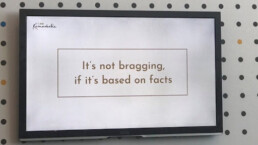
But who are our self-promotion role models? Who can we learn these much-needed skills from? In my #IamRemarkable workshops we have collectively struggled to identify more than a handful of individuals in our professional or personal spheres who self-promote in an authentic way, by showing integrity, by being natural and by not jarring us. Jacinda Ardern and Michelle Obama have both been named as leaders who embody this skill set and who wear it well.
My two visible role models would be someone who I know really well, Jaz Ampaw-Farr, and someone who I admire from afar, Bianca Miller – notably both were on The Apprentice. Both are storytellers, they hook people in with their personality, they share their journeys and you invest in them, you believe them and you want them to be successful as they are authentic. Bianca is an influencer on LinkedIn as she manages her online presence so well. Jaz is a thought leader when it comes to resilience. Both women own their accomplishments and self-promote their impact in their own distinct way.
So here are 8 of my tips on developing your self-promotion toolkit:
- Keep a journal, it can be for appreciation or gratitude or a list of why you are remarkable but the act of writing it down helps you to process and retain each small accomplishment on your journey.
- Practise saying your accomplishments out loud to yourself. Do it in the mirror and listen to your voice, watch your face. If you don’t believe it no-one else will, so practise saying it with meaning and conviction.
- Create a daily affirmation or a daily mantra to remind yourself how remarkable you are.
- Share your accomplishments verbally with others, your partner, your friends and family, your colleagues, so they can help to amplify your accomplishments and remind you of each win.
- Share your accomplishments in writing, update your CV, add them to your LinkedIn profile.
- Leverage your network and use your testimonials on LinkedIn to amplify your accomplishments.
- Tag team with a friend and apply the shine theory in meetings to spotlight one another.
- Listen without judgement and celebrate each other’s accomplishments, role model how to be successful and proud, in a natural and authentic way.
We are all remarkable but we need to remind ourselves and each other of that. In the last 10 weeks we have accomplished so much, individually and collectively, we have grown and pushed out of our comfort zones, we have risen to challenges and grasped opportunities. I would encourage you to make a list of what you should be remembering and celebrating about this bizarre period of history. Own everything you have achieved so that you do not forget when we go back to ‘normal’ or whatever the next chapter will be.
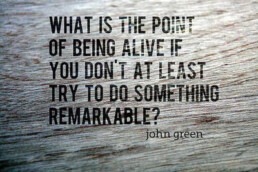
I am remarkable because… I have resigned from 3 jobs in the last 4 years without a job to go to but I have landed on my feet each time. I am remarkable because… I relocated to a new area, and although I didn’t know anyone, I have made new friends. I am remarkable because… I have started #WomenEd, 2 schools and a new business. I am remarkable because… I didn’t allow gardening leave to define me. I am remarkable because… I have not only survived lockdown as a singleton, but I have positively thrived in the space it has given me to be reflective and creative. I am remarkable because… I am resilient and indestructible.
If any of those statements jarred you or made you judge me, it says more about you then it does about me. I’m okay with that. I am not bragging nor boasting, I am just speaking my truth.
“Be genuine. Be remarkable. Be worth connecting with”.
Seth Godin
I know I am genuine, remarkable and worth connecting with. I believe that. If you don’t then I am okay with that. The only person I need to impress, to be happy with and liked by, is myself.
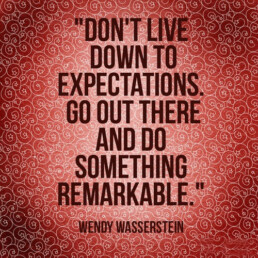
If you want a boost and to learn some self-promotion skills then check out the #IamRemarkable workshops I and other accredited facilitators are running on Eventbrite.
If you want to practise your self-promotion skills then join us for #IamRemarkable Wednesdays on Twitter. If you attend one of my workshops you also get an invite to join our private #IamRemarkable group on Facebook, a safe space for practising your self-promotion skills!
We are on a journey of self-discovery as we explore our belief systems and move from being #10%braver to #10%prouder. It is a process we can learn on together as we discover that there are a lot of things in our lives that are worth celebrating and as we realise that we are far more accomplished than we give ourselves credit for, and that the only person we need to compete with or compare ourselves to, is ourselves. We are all remarkable because we are all striking in embracing our authentic selves and we are all worthy of attention, we just need to keep reminding ourselves of that!
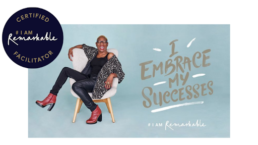
You can watch the promotional video from Google about their #IamRemarkable Diversity and Inclusion initiative here.
Embracing Equity #IWD2023

Hannah Wilson
Each year UN Women choose a theme for International Women’s day that becomes the focus for events throughout the year. The theme for #IWD2023 is #EmbraceEquity and I have mixed feelings about it.
Diversity, Equity and Inclusion are fundamental to be work as a leader, a trainer and coach.
Diversity – I ask people to reflect on who is represented and who is present, also considering who is missing from the space we are occupying which could be a team, a meeting, a library or the curriculum.
Inclusion – I ask people to reflect on how we are doing inclusion by design. We often assume that others feel included because we feel included but the inclusion is not intentional. We need to interrogate how inclusive we are as a workplace and as an employer.
Equity – I ask people to consider the differences between equality and equity. We often think we are being fair by being equal, however the gaps remain the same and get moved up the system when we focus on equality, whereas equity is about identifying and dismantling the barriers.
It is interesting how many schools want to DEI work with the pupils and are less comfortable to do it with the staff. Schools are very focused on meeting the needs of pupils with different needs – there is a tangible commitment to find and remove the barrier pupils are experiencing, but we often neglect the different needs of the staff or do not have the data to inform us.
I ask schools to reflect on how data rich we are when it comes to our pupils and how data poor we often are when it comes to the staff. I ask schools to gather staff voice/ feedback and hear the uncomfortable truths of where the inequities for employees exist.
So having a spotlight on equity is brilliant and much-needed as it is the hardest part of this work. We need to make our workplaces more equitable and we need to address systemic, structural and societal inequities. However, embracing feels too soft for me.
Glass ceilings need shattering. Concrete ceilings need smashing. Inequities need dismantling and redressing. So ‘embracing’ equity feels like a bit of a cop-out. It is well-intended but misses the mark. Values need to be lived not laminated, and the value of equity needs activating for concrete actions not stroking. If it needed to be alliterative perhaps some better options could have been: Expecting Equity? Ensuring Equity? Embedding Equity?
A lot of DEI work does not stick, is not sustained and does not get results because it is framed as good intentions when instead we need to be focused on good outcomes. It is the impact that is essential in transforming how we do things to make a more inclusive workplace for all and a more equitable workplace for diverse employees (ie people with lived experience of the Protected Characteristics).
Thus, we need to consider: How will we measure it? How will we know when and where we are having impact? How will we track our progress?
In my DEI training sessions I talk about the 3 Cs of this work: Consciousness, Confidence and Competence. So here are my calls to action:
- How will we become individually and collectively, personally and professionally, more conscious of the inequities experienced by women in our workplaces? How will we activate more #HeForShe allies and advocates?
- How will we build confidence in analysing the gender data and openly discussing the inequities such as position and salary? How will we build confidence in calling in and calling out the gendered behaviour and the language that have become normalised in our workplace?
- How will we develop the competence to do this work in an intersectional way to consider the experience of women who are doubly, triply and quadruply disadvantaged as they have lived experience of multiple protected characteristics?
My Coaching Journey

Hannah Wilson
It is no surprise that I am a fan of coaching. Coaching has been transformational in supporting me in navigating my journey.
When I was an unhappy Deputy Headteacher I was coached by Carol Jones and Viv Grant. Both helped me get clear on my values, my purpose and helped me communicate my frustration. Moreover, they helped me be intentional about my next steps.
As a busy and very stretched Headteacher I was coached by Eve Warren and Nikki Armytage-Foy. Both helped me process the immensity of the role. Eve helped me focus on my strategic leadership as my job starting a new school was so operational. Nikki helped me focus on me and what I needed to be healthy, happy and fulfilled.
I made sure that my own SLT had access to coaching too. We had training with Fierce Conversations and Graydin, and we had a pool of coaches around our teams to support us on our leadership journeys, personally and professionally, individually and collectively.
Accrediting with Resilient Leaders Elements as I set up my own business accelerated my strategic thinking and goal-setting. I loved the practical and reflective tools that RLE and then Colour-Me Profiling enabled me to put in my growing toolkit of strategies to support my own coaching clients.
I then started my ICF certification journey with the Co-active Institute and I am finishing it with the Teleos Leadership Institute, at the same time as certifying with the British School of Coaching on their ILM L4 Executive Coaching and Mentoring Certificate. As I collated my coaching journey including coaching hours, clients and CPD over the last few years for one of my assessments it made me realise a few things about my experience of coaching:
Coaching is an investment
You need to invest time, energy, finance and resource to be coached and to be trained to coach. I have self-financed most of my journey as it has been about me, in my own time getting clear on different aspects of my life.
Coaching is a cultural commitment
We committed to creating a coaching culture as a school so everyone was trained and developed the skills and language to have courageous conversations. Through me DEI work I am thinking more and more about how coaching is the tool that organisations need to make changes to how inclusive they are as workplaces.
Coaching is about listening
I have definitely become a better listener as a coach. I hear what is being said, how it is being said but also what is not being said. The more I coach the less I say, the more powerful the questions are that I ask.
Coaching is a reflective practice
Yes the coaching session is where most of the action happens. But the mind is activated in the session and the thinking, talking and journaling continue beyond it. I encourage my busy school leaders to be coached from home, at the end of the day/ week so they can give themselves some processing time following the session.
Coaching is important, but so is mentoring
I find the hierarchy between these two support mechanisms an interesting one. In education mentoring is for those starting their careers and coaching is for those progressing up the ladder. Lots of people come to me for coaching when they really need mentoring – especially when they are new to role.
So as my coaching journey continues in 2023, what am I hoping to achieve?
I trained in 2021 with Resilient Leaders Elements & C-me Colour Profiling.
I trained in 2022 with Co-Active Training Institute & Teleos Leadership Institute.
In 2023 I will achieve my ILM Level 7 in Executive Coaching and Mentoring and I will certify with ICF.
In 2021 I coached 60 people, I coached for 265 hours and I trained to coach for 85 hours.
In 2022 I coached 35 people, I coached for 135 hours and I trained to coach for 155 hours.
In 2023 I want to coach less people more and do less training to apply the learning I have experienced.
I am also keen to build the bridge between my Leadership Development Consultancy, Coaching and Training and my advocacy through Diverse Educators. For me coaching is the gamechanger for the individual leaders I work with but also for the organisations I am supporting so systemic coaching for cultural transformation is the goal for my future coaching practice.
#OneWord2023

Hannah Wilson
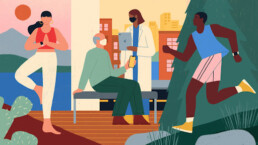
This is my 10th year of doing the #OneWord commitment where you choose a word to set an intention and to frame your year ahead. I really recommend it as a goal-setting exercise as my previous choices have helped me to manifest some opportunities and to make some big decisions.
My previous #OneWord commitments since 2015 have been Courage, Connection, Change, Thrive, Joy, Purpose, Freedom and Legacy.
Since leaving headship in 2019 and setting up my business in 2020 (following a short stint working in Higher Education) my lifestyle and my mindset have changed a lot. Some of my reasons for leaving the system were to have more autonomy, be more independent and to have more freedom. But there were also the factors of my wellbeing, my stress-levels and my increasing frustration. I basically wanted and needed more being and less doing. In a nutshell more life and less work!
I pledged that when I left the craziness of school leadership, because it is just that – the expectations, the pressures and the demands are unrealistic and unsustainable – that I would make some changes. When you are in it you know it is full on, but it is normalised as everyone is feeling the same and doing the same to survive. It has taken me a good 3 years to decompress and to unlearn/ relearn some of the survival techniques I have developed that have ultimately become bad habits that I needed to break.
I have worked on sleeping more, relaxing more, being less stressed, maintaining stronger boundaries and eating lunch every day! I am less institutionalised but I am still working on abandoning some of the systemic and structural ways of working that have been drilled into me over the last 20 years. They served me then, but are they serving me now?
I am definitely healthier and happier than I was, but with what I have gained there are some things that I have lost. One of the big ones is going from being on my feet and being active all day everyday to now being much more sedentary and sitting down far too much!
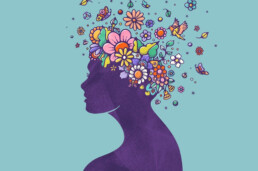
So my focus for this year is not wellbeing, nor self-care but health.
I have always taken my health for granted. I was brought up with my Mum running a large nursery school so I was exposed to everything quite early and I became very resilient to illness. I was the kid who was always at school and never got ill.
In my teens I had a ski accident and a car accident which impacted my back so spine health has been something I have managed throughout my adulthood, but osteophathy, massage and acupuncture help me manage any pain.
As a teacher I was also always in school, I was not susceptible to the cold, the flu or any other bugs that flew around the classrooms and the corridors. I had a few back issues and a few things triggered my mental health but on the whole I was healthy.
In my adulthood the only sickness I have experienced has been travel-induced – food poisoning, salmonella and other bugs (usually water-born) that I have picked up in far-flung destinations.
Then I turned 40, left teaching and the pandemic struck. And things changed…
I have had Covid three times and it took me a long time to get over it, with lingering symptoms like a chesty cough and a breathlessness… I have had joint pain in my knees which is aggravated by being in static/ enclosed spaces… every time I leave the country, despite being careful I pick something up and have a reaction to something I eat or drink… I fell over in the Ugandan jungle and damaged my left knee… and then I picked up a horrific bug when I was in Canada which took me weeks to get over.
A few of my friends have called me out on my mantra ‘I am never ill’ and held up the mirror that in the last few years I have actually been ill quite a lot. I have brushed it off a few times but being honest I need to face the reality my health records are not as flawless as I recollect them.
So my question to myself as a self-coach is what I am going to do about it? I coach everyone else to be empowered and to make changes but do I listen to my own advice?
Someone who coached me a while back made an observation once that I project manage everything else in my life but who is project managing me? I am going to start there and leverage some of the skills that have made my career/ business successful and apply them to myself.
Thus my #Oneword for 2023 is going to be health. I am going to prioritise getting healthier and getting stronger. I am going to make some changes and commit to a different, a healthier lifestyle as all of my excuses are thinning out.

“To keep the body in good health is a duty… otherwise we shall not be able to keep our mind strong and clear”.
Buddha
“Take care of your body. It’s the only place you have to live”.
Jim Rohn
“Health is not valued, til sickness comes”.
Thomas Fuller
Limiting Beliefs

Hannah Wilson
Limiting Beliefs: What is Holding You Back?
As a coach I have the privilege of working with lots of different people. It is a pleasure to be taken into their circle of trust, for them to share their innermost thoughts and their feelings with me. I often hear things that they have not said out loud to themselves or others before.
I hold space for them… I listen… I support… I hold up the mirror for them to see themselves… I play back what I hear so that they can hear what they have said… I catch them… and I help them make sense of the messiness.
A recurring theme in our conversations are the barriers and the obstacles that we put in our own way and the limiting beliefs that we have about ourselves that hold us back from realising goals and fulfilling our potential.

These limiting beliefs show up in different ways for different people: the very loud inner critic inside our head, the imposter syndrome that swamps us and the saboteur that creeps into the room. Each is like a weed that wraps itself around us, restricting our growth.
In order to overcome our limiting beliefs, we thus firstly need to be able to identify them. There is an expression that we need to ‘name them, to tame them’. By labelling them and articulating them we anchor them and get some control back over them.
We then need to identity where they come from so that we can tackle the root of this weed that is trying to strangle us. Often we think it is our voice, our thoughts and our feelings, but when we reflect and begin to unpack the words and the tone, we realise that we have internalised them from external sources. In that they have often come from a family member, a friend, a partner or a colleague, not from us.
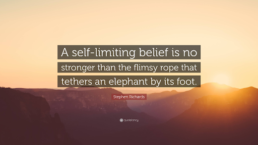
I often say to my clients that we need to remind ourselves to see ourselves, talk to ourselves and treat ourselves how we treat others. We champion, cheerlead and build others up, so it is a double standard if we criticise, crush and pull ourselves down.
We all have limiting beliefs but we need to realise that we are the only ones who can control them. We need to consciously hack them down so that we grow into our full potential. We need to decide who we are going to let occupy our heads and our hearts.
Check out my new REAL toolkit on this theme to read some of the articles, listen to some of the podcasts and watch some of the TED talks to hear from others how they have they developed strategies to overcome their self-limiting mindset.
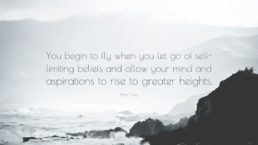
Change

Hannah Wilson
verb. make or become different.
noun. an act or process through which something becomes different.
I change my clothes every day… I changed a light bulb today… The spring is changing my garden day by day… Some people in my life never change…But I change how I feel about them… I am changing direction in my career… I am not someone to change my mind…
Change is a constant.
So why do we fear it? Why do we fight it?
C:
Change needs courage. Change is about relinquishing control. Change evokes compassion.
H:
Change is full of hope. Change brings happiness.
A:
Change is about adapting. Change needs to be accepted with a positive attitude.
N:
Change is letting in the new and saying goodbye to the negatives.
G:
Change is an opportunity to grow. Change is often listening to your gut.
E:
Change is something to explore, to experiment with and to embrace.
We need to reset and reframe how we see and how we experience change.
We need to seek change we can create, rather than to react to change we cannot control.
We need to change how we feel internally, so that we can respond to change externally.
Legacy

Hannah Wilson
Blog originally published on 8th May 2022 here.
noun. an amount of money or property left to someone in a will.
Personally, I find this definition problematic, as to me a legacy is more than what is just left in a will to family members. It is instead what is passed from one generation to the next and is a gift. A gift that is greater than money or property. A gift of ideas, of relationships, of community, of stories and of a way forward.
Moreover, leaving a personal legacy means to me that we are putting a stamp on the future, and making a contribution to future generations. We are leaving a footprint. We want to leave a legacy because we want to feel that our life mattered. A legacy is thus a lasting impact on the world.
Leaving a legacy means dreaming big and changing the world for the better.

As a Headteacher one of my favourite interview questions was about the candidate’s legacy building:
- If successful in this interview, what legacy will you leave at your current school/ in your current role?
- And fast-forwarding to the future, when it is time to move on from our school, what legacy would you want to create and leave behind here?
The answers we received were always fascinating. We discovered the impact individuals had had and wanted to have in their schools. The last one always flabbergasted them (not yet got the job but asking about when I am going to leave?!) but it also showed who had big ideas, a plan and a vision.
To leave a legacy is to create and to leave a gift. A legacy is something that is inherited from our predecessors and our ancestors, something of value that is bestowed on us to nurture and treasure as the successors/ the new keepers of that gift.
As a school leader I remember reading James Kerr’s Legacy and the impact it had me. The success of a world-class team based on their shared vision and values, their collective agency and responsibility. The All Blacks are consistently high-performing because they are a team, and they respect that they are a sum of parts.
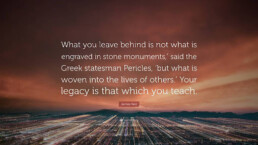
When I reflect on the legacy I have created and left I am proud of my career. Some of the highlights of my legacy:
I was an AHT in a RI secondary school, and I was on the SLT that took the school to Outstanding, specifically increasing the GCSE English pass rate from the mid 50s to the low 80s. I also built the Performing Arts team up and recruited an amazing team who brought the school to life, reigniting the community passion for shows and events.
I was then moved across as DHT to our sibling school, an inadequate secondary school, and I was responsible for T&L and CPD. In 3 years we moved to Good with Outstanding features, but more importantly after I left, the school was reinspected and achieved Outstanding – reading the report I could see my work, the seeds I had sown, being praised. Even though I was no longer in the building, I could see my impact.
Alongside my DHT role, I co-founded #WomenEd and I am proud to see everything the community has achieved 7 years later. Two books and a global network later, but the logo I co-designed and the values I co-wrote are still living on. Every time I see them on line I am proud of my contributions.
Being the founding Headteacher of a start-up secondary school and then a year later of a start-up primary school, is also something I am immensely proud of. The founding teams poured their hearts and souls into engaging hearts and minds to build a community and a culture from scratch. It is a very special journey being a start-up team as there are few opportunities to start from scratch and build, instead of add or fix.
Alongside my HT role, I co-founded #DiverseEd and 4 years later I could not have predicted how far we would have come as a community. The thriving Mighty Network and the buzz about our book published last month are our legacy. With 125 authors in our collective voice publication, we embody the quote:
The Whole is Greater than the Sum of Parts.
Aristotle
If you want to do some more reading about Legacy then this article and resource from Tony Robbins is also worth a read:
Tony Robbins: 7 Steps to Leaving a Legacy:
- Discover your purpose: Why are you in this world and what is your calling?
- Reveal your natural skills and abilities: What do you have in your toolkit and are you fulfilling your potential?
- Unlock your passion: What brings you joy and makes your heart sing?
- Determine your X Factor: How clear are you of your Unique Selling Point and the value you add?
- Create a business/ road map: How are you planning for the future?
- Inspire the next generation: How are you engaging with your prospective successors?
- Give back: How are you paying it forward or gifting your time, energy and inner resources?
Let me know what resonates and what your legacy is, or will be.
Legacy: What Will You Leave? What Will You Create?

Hannah Wilson
Blog originally published here.
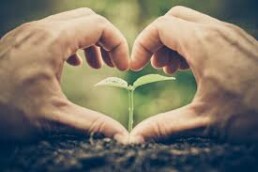
I often reflect on our legacy as teachers, educational leaders but also as human beings. Not that I am morbid, but I do sometimes consider what will be written about me in my obituary and what will be written on my gravestone. It is a good reality check when we get lost in our roles as I will not let it be “she was a hard worker”.
I think it is a great question to ask candidates at interview:
- What would your legacy be if/when you leave your current role/ school?
- What could your legacy be if you joined us and moved on in the future?
I am really proud of the legacy I have created in previous roles where I have set up departments, coached/ mentored staff at all levels of their careers to be the best version of themselves, curated whole school events in schools were the performing arts were not valued, set up federation wide networks and projects like a MAT wide choir. Reading the Ofsted report of the school where I was Vice Principal I can see the work I did to co-lead the school from Inadequate to Outstanding, despite not being there for the inspection. As a headteacher of a start up school everything is our legacy, but we are also conscious that as we move on things will change, but what will remain? Changes in working practice such as flexible working, co-leadership models and part time leadership models I hope will be part of my legacy.

As a founding team of 2 new schools we are conscious that we are constantly sowing seeds for the future. Some days it can be frustrating that we are still nurturing shoots planted last year as it has been a long hard slog and it feels like we should see more growth, but we must remind ourselves we are only 2 terms (8 months) old at the primary and still only 1 year and 2 terms (20 months) old at the secondary. Some days we are trying to run before we can walk.
If you compare our early development as schools to that of a developing child it is a refreshing reality check about our expectations of our team, our community, our students.
An 8 month old’s development:
A whole new world of adventure is beginning to open up for your baby. Many babies start learning to crawl at this age. There will be many bumps and falls as your baby becomes more mobile, but you can help make things safe by child-proofing your home. Your baby may start to become shy of strangers, or cry if you leave him with a babysitter. This is the beginning of separation anxiety. In time he will learn that leaving him doesn’t mean that you won’t come back.
A 20 month old’s development:
Your 20 month old may be able to run, though it’ll take all his concentration, and he’ll probably still be a little unsteady. He may also go upstairs by himself, though he’s likely to need your help on the way down. Chances are, playtime is becoming even more fun as he learns new skills such as kicking and throwing. Toddlers are naturally curious about everything, including their genitals. Just as your toddler played with his fingers and toes when he was younger, he may begin to play with his genitals now. It’s completely natural, and isn’t a cause for concern unless it’s happening constantly.
We have to remember that we will not always witness our legacy whilst we are in post. This can be hard to accept. On our tough days, and there have been many this term, when our values and our resilience are being compromised, we have to pause and remind ourselves that our ripple effect of change is not immediate.
As a values-led school with a holistic approach, we are affecting change, but it is a slow change. The change can feel painfully slow as we take 1 small step forward and 2 large steps back most weeks. We need to hold on to and stay focused on the longer term attitudinal and behavioural change that will be a generational legacy. We need to appreciate that we may not see the fruits of our labour whilst we are at the Aureus Schools. It is our young people as they reach adulthood who will lead the change. Our young people are empassioned global citizens who will be the change.

Our community can be challenging, the issues our children and families face are well-masked behind our new build estates. The wider perception of Oxfordshire is warped compared to the reality. Many of our peers from previous, mainly urban schools, are not aware of the level of trauma we deal with on a daily basis. Everyone assumes it is only in urban environments that certain issues are experienced. As a school we have done a lot of training on mental health, wellbeing and Adverse Childhood Experiences. We have done wider reading on Compassionate Fatigue as the trauma our children have experienced takes it toll on our team in how it manifests itself. Our safeguarding team all have supervision as we are being over exposed to number of cases that could affect our own emotional wellbeing.
Bennie’s blog about tackling racism, does not dwell on the level of prejudice we deal with on a daily basis. The prejudice – racism, sexism, misogyny and homophobia – we tackle day in and day out. The anti-social behaviour in the community which is increasing, will challenge us further as our students become teenagers. Working closely with the local police has been a positive step forwards. We need to break some of the cycles but know that we cannot do it alone – we need a system wide, societal change to sustain it.
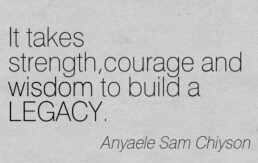
With our school system and our society struggling to survive in the complex and fractured landscape we find ourselves in, now more than ever before, we need to focus on the difference we can make. The culture and ethos at both of our schools is based on our shared vision and values, underpinned by relationships.
Our legacy might not be tangible, nor visible, yet, but we know we are making a difference and creating a different kind of legacy. A legacy that we will not see with our own eyes perhaps.
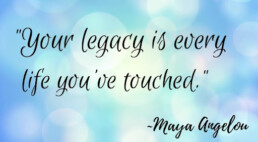
Wisdom from Legacy, James Kerr:
Mā te rongo, ka mohiō;
Mā te mohiō, ka mārama;
Mā te mārama, ka mātau;
Mā te mātau, ka ora.
From listening comes knowledge;
From knowledge comes understanding;
From understanding comes wisdom;
From wisdom comes well-being.
Is Vulnerability the New Hero Leadership?

Hannah Wilson
Blog originally published here.
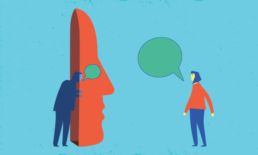
Invited to contribute to one of The Big Education’s ‘Big Conversations’ I was excited to join a stellar line up including Sir Tim Brighouse, Karen Giles and Nadine Bernard. Each speaker contributed a perspective on leadership which we all agreed should be underpinned by values, integrity and authenticity. However, we realised that in order to talk with conviction about vulnerability it felt appropriate to reveal some of our own vulnerabilities, both professionally and personally, so that the audience may learn from our reflections on our career experiences and indeed mistakes we had made along the way.
So, my musings began: Is vulnerability a new thing? Indeed, it is not. Is it a new thing when we are looking at leadership? Perhaps it is. How does it relate to hero leadership? Well, this is where it gets interesting in my eyes – if we review the dominant narrative and imagery of leadership, it is depicted as acts of heroism, as an effective leader being a strong leader, and often through a gender stereotyped lens too.
When you start searching for vulnerability definitions and quotations some common ideas begin to take shape which encompass elements of uncertainty, risk and emotional exposure. An expert in the field of vulnerability is Positive Psychologist Brene Brown who has written a number of books and delivered a TED talk on why we need to embrace it.
“Vulnerability is at the core, the centre, of meaningful human experiences”. (Brown)
Thus as schools are people-centred, and the ultimate success of a school is based on the quality of the relationships nurtured between the people the school serves and those who are serving them, then the messiness of the human existence and the rawness of human vulnerability is at the core of education.
As school leaders we work with increasingly vulnerable communities. We are under daily pressure to meet the needs of the children in our care, their families and the wider community. As a headteacher I was acutely aware of the emotional labour my team were weighed down with as we safeguarded our school community. As a school we decided to put mental health and wellbeing at the centre of our curriculum and our decision making as a school, which elevated the initiatives we committed to such as our art therapy, thrive and nurture programmes.
Alongside the needs of our students, we also needed to meet the needs of our vulnerable staff. As a school who was prepared to do things differently to strive for a different outcome, our hope and optimism attracted staff who were looking for solutions, staff who wanted to stay in the system but who were feeling forced out. A school is often a safe haven, a place of security and stability, a place of belonging and visibility, a place of diversity and inclusion. In her work on silence and speaking out, Audrey Lourde suggests “that visibility which makes us most vulnerable is that which also is the source of our greatest strength”. (Lourde, 2017)
“Vulnerability sounds like truth and feels like courage. Truth and courage aren’t always comfortable, but they are never weakness”. (Brown, Daring Greatly , 2015)
It has become more and more apparent that some schools are more vulnerable than others to work in. Schools serving the disadvantaged communities, coastal schools and schools with poor inspection outcomes often become SNOW schools (schools no one wants) which are then often academized and (re) brokered into trusts to fix.
In our current school system we equally find that school teachers and school leaders are finding themselves in increasingly vulnerable roles. The ‘glass ceiling’ for women leaders in the school system has been a high-profile topic of debate for the last five years since we started #WomenEd a grassroots gender equality movement. With the arrival of our sibling #BAMEed, our reflections and discussions moved from the ‘glass’ ceilings to ‘concrete’ ceilings as we scrutinised the data of the demographic breakdown of our teachers and leaders versus our students. In an increasingly diverse country, with nearly one quarter of children in our primary schools representing a range of different cultures we have a disconnect when the number of BAME teachers is significantly lower than this and the number of BAME school leaders represent a marginal percentage. With national initiatives to increase the number of women and BAME headteachers, we need to ensure that they are recruited to roles which are well-supported and do not end up in roles which are ‘glass cliffs’, those roles which are isolated, unstable and unsupported. Vulnerable demographic groups ending up in vulnerable roles in vulnerable schools is problematic for our workforce data as the narrative then becomes warped about who the ‘heroes’ in the system are.
“Vulnerability is not winning or losing; it’s having the courage to show up and be seen when we have no control over the outcome. Vulnerability is not weakness; it’s our greatest measure of courage”. (Brown, Rising Strong, 2015)
We also find ourselves in an era where we are struggling to recruit and retain teachers, but equally where we have a high attrition rate and mobility of headteachers. There is an emerging narrative of headteachers speaking out about the vulnerability of their role. James Pope, the former Headteacher who featured on the ‘School’ television documentary has started a campaign and series of events to support school leaders who are casualties of the system. With the corporatisation of our education system, the HR processes and systems in schools are becoming increasingly business like. The language of ‘NDA’s, ‘Gagging Orders’, ‘Pay Offs’ and ‘Gardening Leave’ is now commonplace.
As I prepared my speech, listened to the other speakers, reflected on the topic and discussed it with others in the room my final thoughts are: is there a difference to being vulnerable and feeling vulnerable as a school leader? Do we thereby need to learn from and embrace these facets in different ways?
“Daring greatly means the courage to be vulnerable. It means to show up and be seen. To ask for what you need. To talk about how you’re feeling. To have the hard conversations”. (Brown, Daring Greatly , 2015)
To embrace our vulnerability we are encouraged to: find the courage to be seen; ask for what we need; accept the imperfect; show compassion to self and others; talk about how we are feeling; be authentic; be prepared to take risks; own our stories. A great piece of advice I once received stated that: maybe life isn’t about avoiding the bruises, maybe it’s about collecting the scars to prove we showed up for it. This resonated with me and my philosophy of character education, growth mindset and learning from mistakes, as a fear of failure can inhibit our potential. In order for us to be ‘innovative, creative and agents of change’ we need to lean into our vulnerability. (Brown, Daring Greatly , 2015)
Hannah Wilson
Former Executive Headteacher, Co-Founder of #WomenEd and Head of Secondary Teacher Training
References
Brown, B. (2015). Daring Greatly . New York: Penguin.
Brown, B. (2015). Rising Strong . New York: Penguin.
Brown, B. (n.d.). The Power of Vulnerability. TED Talk.
Lourde, A. (2017). Your Silence Will Not Protect You. Silver Press.
